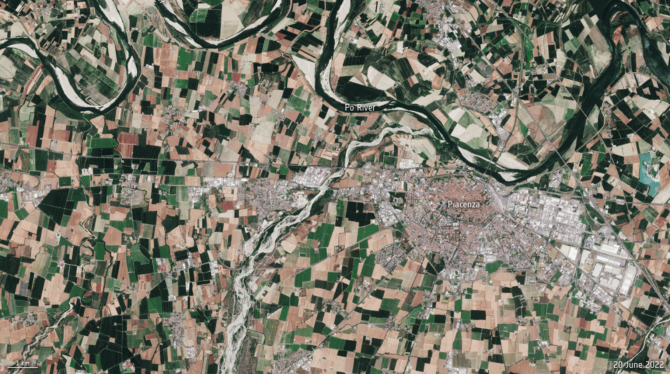Alarming new projections from a study by Cornell and partner universities reveal that Italy's Po River basin is likely to face intensifying drought conditions, based on a comprehensive analysis that combines historical records, climate models, and centuries-old tree-ring data.
Researchers combined limited historic river flow observations, climate model simulations, and paleohydrologic reconstructions from tree ring proxy data to examine how hydrological drought has evolved and how it may continue changing in Italy's Po River basin.
The Po River serves as the main outlet for northern Italy's water systems, fed by precipitation from the Alps and the Apennine Mountains, and its flow is crucial to monitor because it can affect regional agriculture, energy production, economic stability and public health.
Historical rainfall and river flow data exist from only as far back as a few decades to 200 years, depending on the location, time spans too short to assess long-term hydrological behavior accurately. Climate change adds more uncertainty, as historical data are less likely to correlate with potential future conditions. Tree ring widths, which reflect the dry or wet conditions affecting tree growth annually, provide valuable proxy climate data from before historical recordkeeping began.
A study published in the journal AGU Advances by researchers from the University of Bologna, Cornell, and University of Illinois, Urbana-Champaign combined limited historic river flow observations, climate model simulations, and paleohydrologic reconstructions from tree ring proxy data to examine how hydrological drought has evolved since 1100 CE - and how it may continue changing until 2100 CE - in Italy's Po River basin. This basin supports about 40% of the country's gross domestic product and 45% of its hydropower, and it has a known history of worsening drought conditions since 2000.
"This is the first time that paleo records, observational records, and extensive model simulations are brought together and harmonized to study the evolution of river droughts over a period of 1,000 years," said Stefano Galelli, associate professor in the School of Civil and Environmental Engineering at Cornell and co-author of the study.
The work revealed agreement between paleohydrologic reconstructions and climate model simulations of past droughts, including some during the Medieval Climate Anomaly (900-1300 CE) and the Little Ice Age (1350-1600 CE). Those droughts lasted nearly 40 years and appeared to be much more extreme than modern droughts. The agreement between the reconstructions and modeling of past conditions provided support for the team's projections of future drought, according to the authors.
"The alarming aspect is that the annual river discharge at the basin outlet is projected to decrease substantially - by about 10% - over about the next 75 years," Galelli said, "a result that is consistent across climate models and CO2 emission scenarios."
Though the models suggested fewer droughts will occur in the 21st century, those that do occur will be 11% longer and 12% more severe as climate change reduces water availability and human activities demand more water.
"The Po River basin is very likely to get much drier as global warming continues," Galelli said. "We should thus expect to witness future droughts with duration and severity that matches - or even exceed - the worst events observed during the past 1,000 years. This calls for major water management plans."
The research was supported in part by the National Science Foundation.
This article by Rebecca Owen is republished courtesy of Eos, hosted by the American Geophysical Union. Read the original story here.







